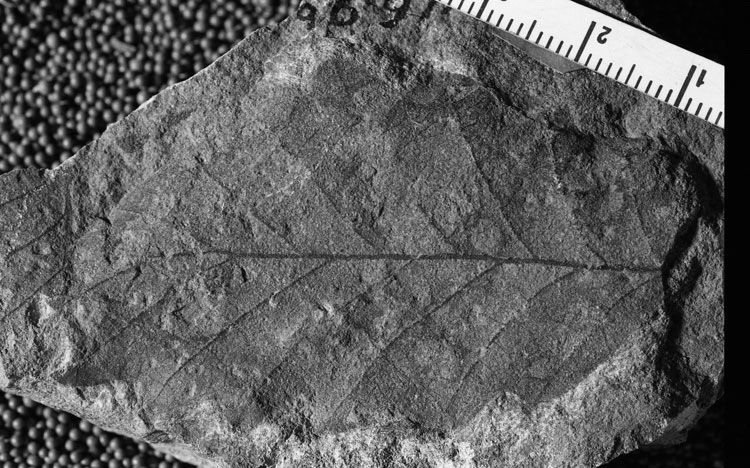Locality
From Hollick (1930) (p. 69)
"Chignik River, just below Long Bay, Alaska Peninsula (original No. 55); collected by W. W. Atwood and H. M. Eakin in 1908 (lot 5297)."
Description
From Hollick (1930) (p. 69)
"Plate 29, Figure 2a; Plate 36, Figure 4"
"Leaves elliptical, cuneate at the base, 7.5 centimeters in length by 3.75 centimeters in width across the middle; margin undulate or crenate-dentate; nervation simply pinnate, craspedodrome; secondary nerves subparallel, the upper ones leaving the midrib at angles of about 45°, the lower ones leaving the midrib successively at more obtuse angles and curving downward, all extending to and terminating in the marginal crenulations."
Remarks
From Hollick (1930) (p. 69)
"In these leaves the base is cuneate and the two sides of the leaf are unequal. The secondaries on one side are straighter and with a more acute angle of divergence from the midrib than those on the opposite side, the lower of which become almost horizontal.
Our specimens appear to represent merely a large form of some one or another of the species described under the names Quercus marioni Heer (1883) p. 23, pl. 56, figs. 1 - 6) Q. johnstrupi Heer (1883) (p. 24, pl. 56, figs. 7 -9, 9b, 10, 11, 11b, 12a) and Q. langeana Heer (1883) (p. 24, pl. 56, figs. 13a, 14, 15) from the Patoot beds of Greenland, all of which might well be included under a single specific name.
Another figure, representing the upper part of what is apparently an oak leaf larger than ours, from the Raritan formation (" Amboy clays") of New Jersey, was tentatively referred by Newberry (1895 [1896]) (p. 69, pl. 19, fig. 7) to Quercus johnstrupi, but the identity of this figure with that species or with either of the other two allied species is very obscure as compared with the similarity of ours."
